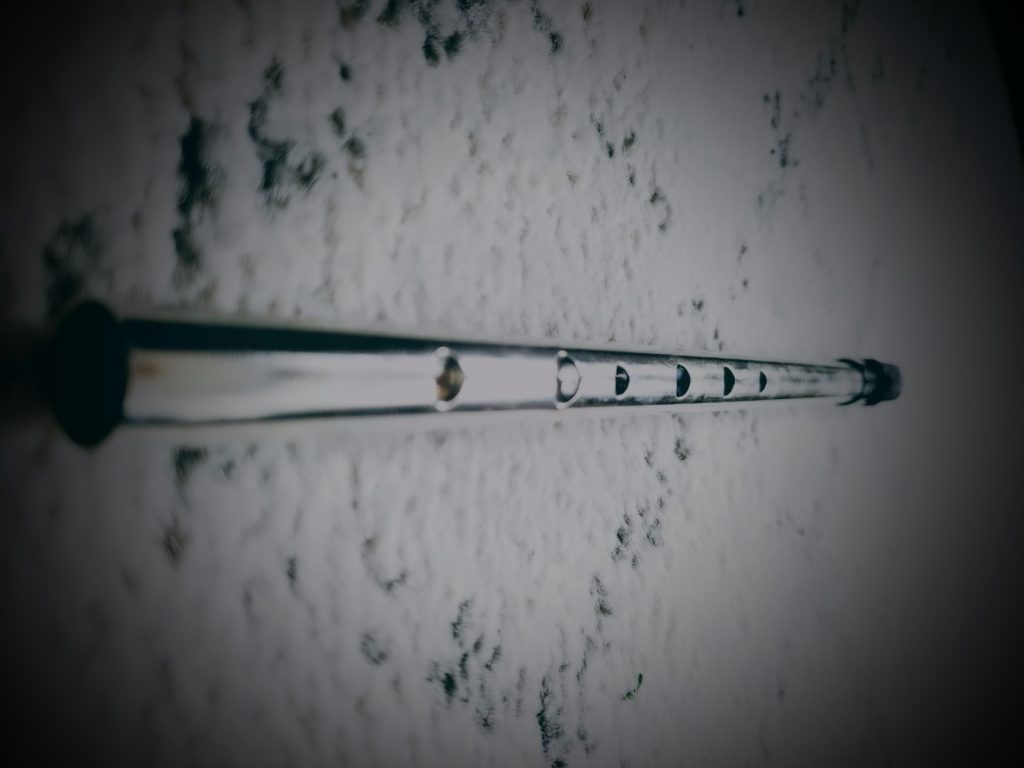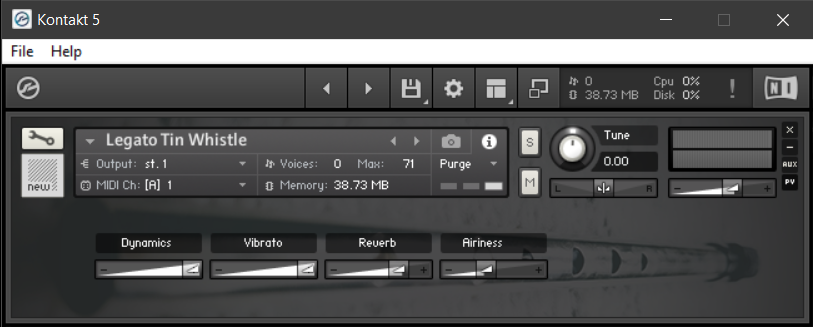Legato Tin Whistle
A legato tin whistle with Celtic musical ornaments.......


ByCordaro Rodriguez
The story
LEGATO TIN WHISTLE
There aren’t many legato instruments on Pianobook. But hopefully that can change. I’ve always been a fan of Celtic music–so much so, that I bought a tin whistle a few years ago. I eventually decided to sample it as an experimental proof of concept for another software instrument I’m creating. The results, however, surprised me, and so I thought I would share what I’ve come up with so far. This tin whistle is in the key of D and uses a couple “ancient” simulated legato and vibrato scripts from a few Kontakt legends. But don’t let that dissuade you. Through the use of a few of quasi-instrument modeling tricks, this little guy can get the job done. Tin Whistles are indeed instruments of very limited range–a little more than an octave. And they tend to only play well in whatever key they are tuned to. So that’s all you get here.
FEATURES
Keyswitches. There are 2 keyswitches. One for legato and one for staccato. They are marked in read.
Velocity. Both articulations are sensitive to velocity. Hitting the keys harder gives you some decorative notes. They sound best when playing in the key of D. But there are are few other keys that might work as well.
Dynamics. There are some simulated dynamics through the use of some internal Kontakt shenanigans.
Vibrato. Vibrato is set to CC21. If you are daring, you can go into the script and adjust it’s parameters, e.g., speed, depth, randomness, etc.
Reverb. Just a impulse response from a large church sanctuary. Adjust to taste.
Airiness. The air passing through the whistle was sampled separately. You can turn it up or down.
Release Trigger. I sampled myself taking a few breaths for added realism. It’s velocity sensitive. So if at the end of the phrase, you do not wish for a breath to be taken immediately following, just play that last note at a super low velocity.
FINAL THOUGHTS
You may notice that the air samples sometimes go longer than the actual pitched notes. My bad. I will correct this if I ever release something like this commercially. But, I’m still learning and this instrument really only started as an experiment–a proof of concept. Although at any rate, while playing the instrument, you should probably take virtual breaths, since no one’s lungs are capable of blowing infinite air. Once I can figure out the script for it, I would make a GUI timer that shows you how much air is left in the virtual lungs; and maybe automate a slight pitch bend at the end of the note. I originally approached Pianobook as a place to learn how to sample instruments and acquire interesting new sounds. I approached it with a growth mindset, without feeling things needed to be perfect. Often, I would just be doing experiments in sampling, and felt the desire to share anything of worth. Now that Pianobook has evolved, I must admit there is more anxiety in submitting instruments given the brutal honesty of some reviewers. Now there seems to be a bit of a performance mindset, and with that comes some apprehension. But this must be seen as a good thing because maybe it’ll spur faster growth in us as samplists. So here goes another one! With that, I hope you find this tin whistle useful!
Legato Tin Whistle - Brief Walkthrough
Interface

Reviews
Perfect!
This is really a pro instrument. I wish I could have these controls on all my payed instruments. Bravo! Well done.
Bottled innocence!
Discovered this amazing instrument after being blown away by Pneuma. They go together so well!
Sublime
That's all I want to say because this instrument it's just perfect and it absolutly deserve a spot as one of the best wind instruments on PIanobook!
